Beginnings of Alberta

The last ice age which ended 10,000 years ago created a land bridge over the Bering Strait between Asia and North America. This enabled early Homo Sapiens (humans) to wander onto and settle across both North and South America. As the last ice age ended timber, water, and wildlife became available in the region. From that time, Indigenous people roamed the plains and the eastern Rockies of what later became Alberta, following the buffalo.
European explorers first appeared in the 1750s as the fur trade expanded across western North America with the Hudson’s Bay and the Northwest Company.
The first fort in Alberta was launched in Fort Chipewyan by explorer Peter Pond in 1788. Next up, Fort Edmonton was launched in 1795.
Fort Macleod was founded in 1874 with the arrival of the North West Mounted Police, led by Colonel James F. Macleod. The NWMP force had been formed to protect Canadian sovereignty in the West. Colonel Macleod then travelled north to found Fort Calgary in 1875.
After 1870, settlement by the colonists began across Alberta based on a ranching and farming economy.
The Province of Alberta
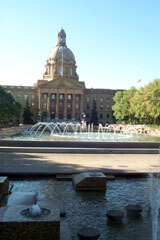
From the area called North-West Territories, the province of Alberta was created in 1905. The district was named after Queen Victoria’s fourth daughter, Princess Louise Caroline Alberta, the wife of the Governor General of the time, The Marquess of Lorne (Sir John Douglas Sutherland Campbell). The Princess accepted the naming on the grounds that it honoured her father, Prince Albert (1819-1861), Alberta being the feminine version of the name Albert.
Background to Edmonton

The first indigenous inhabitants settled in the area that is now Edmonton, Alberta around 3,000 BC and perhaps as early as 10,000 BC, when an ice-free corridor opened. As the first Europeans arrived, the name Edmonton was given to Fort Edmonton, a Hudson’s Bay Company (HBC) fur trading post on the North Saskatchewan River, in 1795. It was named after Edmonton, England, the birthplace of Sir James Winter Lake, who was at the meeting of the governors of the HBC when the fort was established.
Amiskwacîwâskahikan, also known as Edmonton, is located on Treaty 6 Territory, home to many nations including the Cree, Saulteaux, Blackfoot, Sioux and Métis People. Edmonton is lucky to boast the second largest Indigenous population in Canada, full of talented performers, artisans, musicians and entrepreneurs.
Edmonton Industry
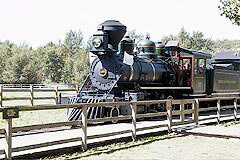
Transportation has been the cornerstone of the settlement and development of Edmonton. The North Saskatchewan River was a major conduit for the historic fur trade, which established trading posts near what is now Edmonton. The advent in the early 1900s of railways and later of roads, oil and gas pipelines, and an international airport transformed the city into a transportation centre known as the “Gateway to the North.”
Shortly after the completion of the Second World War, in 1948, a huge oil discovery was made in Alberta at Leduc, south of Edmonton. It was soon apparent that there were many successful oil fields surrounding Edmonton, which greatly increased the exploration for oil in the province. Over time, Edmonton has become the service and supply centre for the oil industry as well as the petrochemical centre for Western Canada.
Early Settlers around Calgary
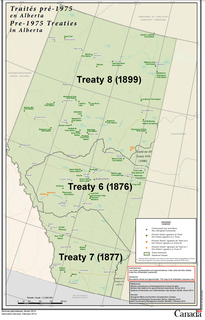
The lands in the area of what later became Calgary were first explored by fur traders. Fort Calgary was built in 1875 by the North West Mounted Police (later renamed the RCMP) to protect the western plains from American whiskey traders. The fort was named after Colonel Macleod’s home in Scotland.
The first settler and rancher in Calgary was Sam Livingston who settled in the early 1870’s after returning from the California Gold Rush of 1849. His land was located on what is now Heritage Park in Calgary.
Treaties with the First Nations
As the railway and telegraph lines began to extend across the west, the First Nations of Alberta agreed to cede their land to the Canadian Government in a series of treaties. The First Nations of North-Central Alberta (from Jasper to Cold Lake) signed Treaty No. 6 in 1876 at Fort Carlton with the Cree. In southern Alberta (south of Red Deer), the Blackfoot, Blood, Peigan, Sarcee (Tsuu T’ina), and Stoney signed Treaty No. 7 in 1877 at Blackfoot Crossing. In 1897, the Klondike gold rush and the influx of white people into the North prompted Treaty No.8 in 1899 with the First Nations of the Lesser Slave Lake area (basically all of northern Alberta)
The Arrival of the Railroad
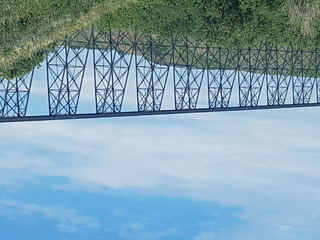
The town of Calgary was a thriving western settlement, centered around the community of Inglewood. The building of the transcontinental railroad changed the city’s landscape, as the CPR built its station beside the current Palliser Hotel. In 1896 the transcontinental railroad began carrying passengers and freight to the Pacific Ocean, and the city began to grow quickly being a jumping off point for new settlers in the area. The city became a major commercial centre as agricultural goods were sold for eastern consumption, and the farmers bought manufactured goods, brought from the east by the railroad.
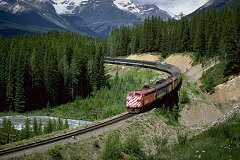
In 1894, The City of Calgary was incorporated. In 1904, the City abandoned most street names and converted to numbered streets. In 1908, Calgary got its first municipal railroad (street cars) and a public library. Many of the sandstone buildings along the eastern end of Stephen (8th) Avenue Walk and along Atlantic (9th) Avenue SE date back to this era. Over the next three years, Calgary grew by 30,000 people to to a robust 85,000.
Dinosaurs, Geology, and Oil
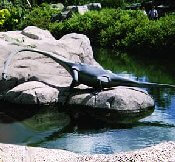
Many millions of years ago the area around Calgary was part of a huge sea. During the dinosaur era, this area was warm, and hosted not only dinosaurs but generous vegetation needed to support such huge animals. Over millions of years this vegetation died and settled on the bottom of this sea. As continents shifted, Calgary became part of North America and the sediments were lifted well above sea level. The pressure of deep layers of rock on the decaying vegetation created the vast oil and gas reserves in Alberta today.
The continental drift of the Pacific Plate into and under North America forced the wrinkles in the rock on the western edge of the continent that includes the Rocky Mountains. Several ice ages (the last one was only 10,000 years ago) smoothed the land to the east of the mountains and left behind the fertile western plains that today feed the world.
Oil Boom

Pump Jacks near Swan Hills
The 1947 discovery of oil at Leduc ushered in a twenty-year period of intense exploration, new discoveries and expansion of Alberta’s oil industry as a follow up to the oil in Turner Valley. Scientists began to look more closely at the Devonian reef formation in which the Leduc oil had been found and realized that there was much more to access in our province.
Several big oil companies such as Standard Oil and Imperial Oil located their headquarters in Calgary which laid the groundwork for Calgary becoming the hub of the oil and gas industry in Western Canada.
